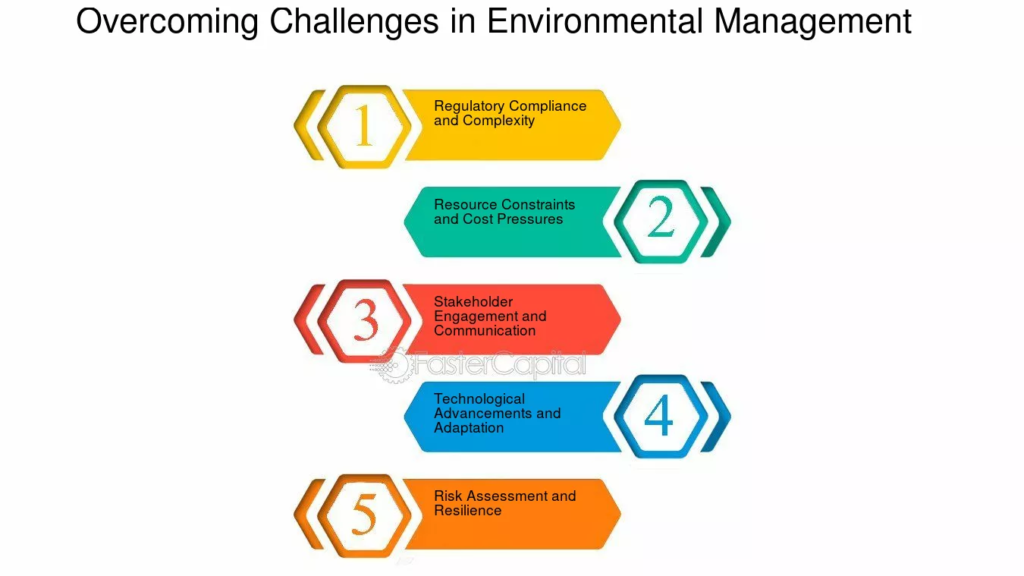5 Strategies for Effectively Managing Environmental and Regulatory Challenges

In today’s corporate environment, businesses face increasing scrutiny regarding their environmental impact and regulatory compliance. With growing demands for accountability, organizations must implement effective strategies to maintain compliance while advancing sustainability objectives. Addressing these challenges is critical for ensuring operational continuity, fostering stakeholder trust, and achieving sustainable growth. Below are five key strategies that leading organizations employ to navigate environmental and regulatory complexities:
Proactive Compliance Monitoring and Reporting
Regulatory frameworks are continuously evolving to incorporate advancements in science, policy changes, and public expectations. Organizations that take a proactive approach implement comprehensive compliance monitoring systems to track regulatory changes across jurisdictions. Regular internal audits, automated reporting tools, and dedicated compliance teams enable businesses to stay aligned with environmental regulations and industry standards. By reducing the risk of non-compliance, this approach reinforces an organization’s reputation as a responsible corporate entity.
Integrating Sustainability into Core Business Strategy
Sustainability has become a strategic imperative for modern businesses. Successful organizations incorporate sustainability into their core strategies by setting measurable goals in areas such as carbon reduction, waste management, energy efficiency, and resource conservation. Aligning operations with sustainable practices not only ensures regulatory compliance but also enhances brand reputation and attracts environmentally conscious stakeholders. Brazil Potash exemplifies this approach by prioritizing environmental responsibility while supporting Brazil’s agricultural growth. Brazil Potash Autazes focuses on the exploration and development of potash resources located in the state of Amazonas, Brazil, positioning itself as a key player in the region’s agricultural mineral sector.
Transparent Stakeholder Engagement
Effective management of environmental and regulatory challenges requires transparent communication with key stakeholders, including regulators, customers, employees, and local communities. Open dialogue about sustainability initiatives, compliance efforts, and long-term plans builds trust and credibility. Organizations that leverage reports, forums, and digital platforms to share their progress demonstrate accountability and foster positive relationships with stakeholders.
Leveraging Technology and Innovation for Compliance
Advanced technologies provide critical tools for addressing environmental and regulatory challenges. Solutions such as real-time emissions tracking and AI-driven compliance analytics enable organizations to monitor performance, mitigate risks, and optimize resources. Companies that invest in digital tools streamline reporting, enhance data accuracy, and improve decision-making, leading to stronger compliance and operational efficiency. Patagonia serves as an example of innovative sustainability, utilizing recycled materials, ethical supply chain practices, and technologies to promote environmental responsibility. Their Worn Wear program, which encourages repairing and reusing clothing, highlights how innovation can align with sustainability goals while fostering customer loyalty.
Collaboration with Industry and Regulatory Stakeholders
Navigating complex regulations is enhanced through collaboration with industry groups, regulatory bodies, and multi-stakeholder partnerships. Active participation in industry associations and regulatory consultations provides businesses with valuable insights into emerging policies and best practices. These collaborative efforts also enable organizations to contribute constructively to policy development while ensuring their interests are represented. Strong relationships with regulators and industry peers demonstrate a commitment to responsible and cooperative engagement within the regulatory framework.
By prioritizing compliance, sustainability, and collaboration, organizations can effectively manage environmental and regulatory challenges. Integrating environmental responsibility into core strategies fosters resilience, builds trust, and positions businesses as leaders in their industries.

Post Comment